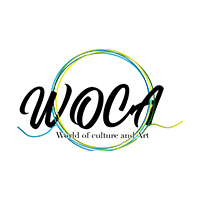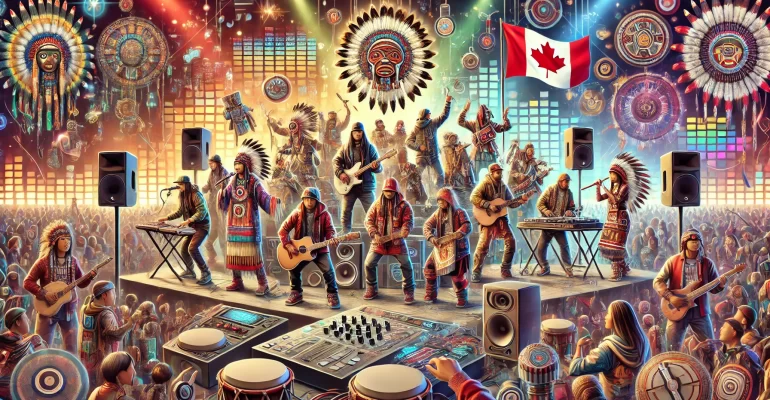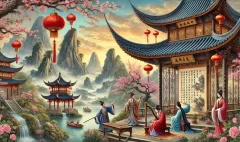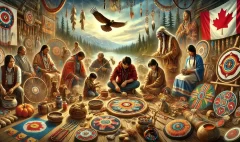Mixing Beats and Traditions: The Exciting World of Contemporary Indigenous Music in Canada
Mixing Beats and Traditions: The Exciting World of Contemporary Indigenous Music in Canada
Are you ready to dive into the awesome world of contemporary Indigenous music in Canada? Get ready to tap your feet, nod your head, and maybe even dance a little as we explore how Indigenous artists are blending traditional sounds with modern beats to create some seriously cool tunes. Here at WOCA Group, we’re all about celebrating diverse cultures, and we can’t wait to share this musical journey with you!
What is Contemporary Indigenous Music?
Before we jump into the deep end, let’s talk about what we mean by “contemporary Indigenous music.” Contemporary Indigenous music is:
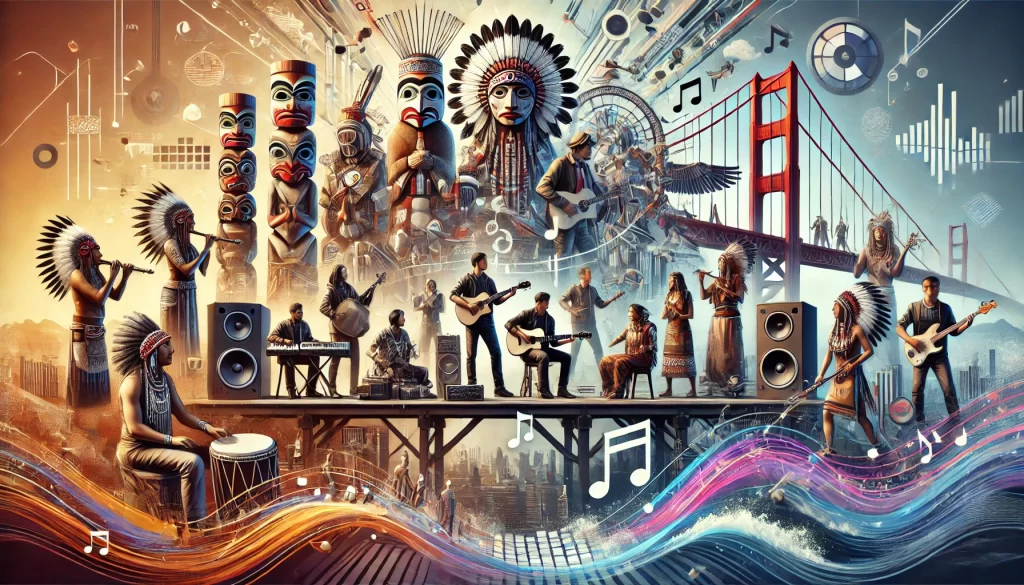
- Music made by Indigenous artists in recent times
- A blend of traditional Indigenous sounds and modern music styles
- A way for Indigenous artists to express their identities and experiences
- Often, but not always, includes lyrics in Indigenous languages
- A powerful tool for cultural preservation and expression
“Contemporary Indigenous music is like a bridge,” explains Sarah Eaglesong, a Cree musician. “It connects our ancient traditions with our modern lives, helping us express who we are today while honoring where we come from.”
The Roots of Contemporary Indigenous Music
To understand today’s Indigenous music scene, we need to take a quick trip back in time. Indigenous peoples have been making music for thousands of years. Traditional music includes:
– Drumming
– Singing
– Flute playing
– Rattles and other percussion instruments
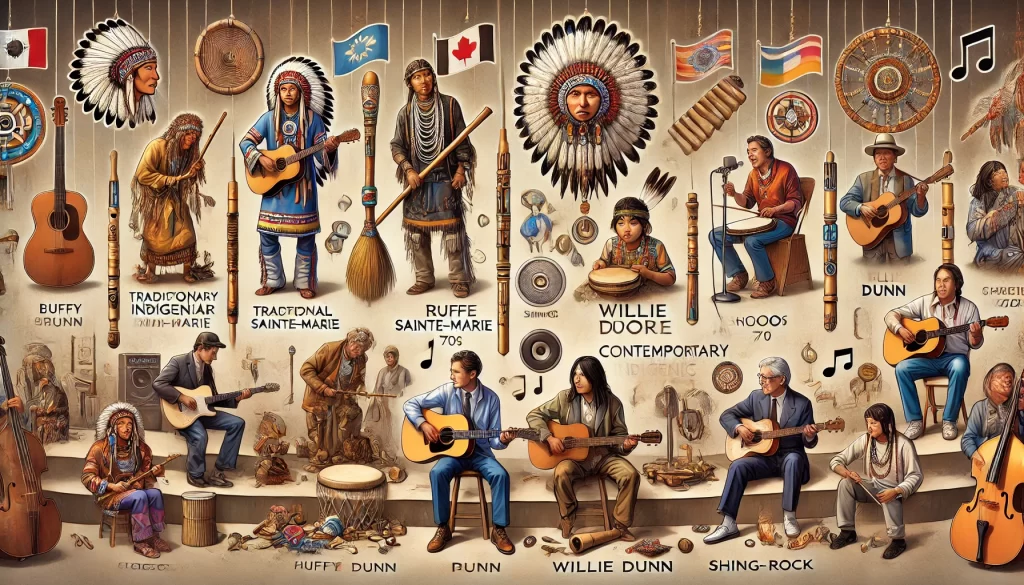
These traditional sounds form the foundation of much contemporary Indigenous music. In the 1960s and 70s, Indigenous artists started to blend these traditional elements with popular music styles like folk, country, and rock. This was the beginning of what we now call contemporary Indigenous music.
Some early pioneers were:
– Buffy Sainte-Marie (Cree): A folk singer who gained international fame
– Willie Dunn (Mi’kmaq/Scottish): A filmmaker and folk musician
– Shingoose (Ojibway): A folk and country artist who advocated for Indigenous music
These artists paved the way for the diverse and exciting Indigenous music scene we have today.
Genres and Styles: A Musical Buffet
One of the coolest things about contemporary Indigenous music is how diverse it is. Indigenous artists are making waves in almost every genre you can think of!
Let’s check out some of the genres where Indigenous artists are shining:
Hip Hop and Rap
Hip hop has become a powerful tool for Indigenous artists to share their stories and address important issues.
Example artists:
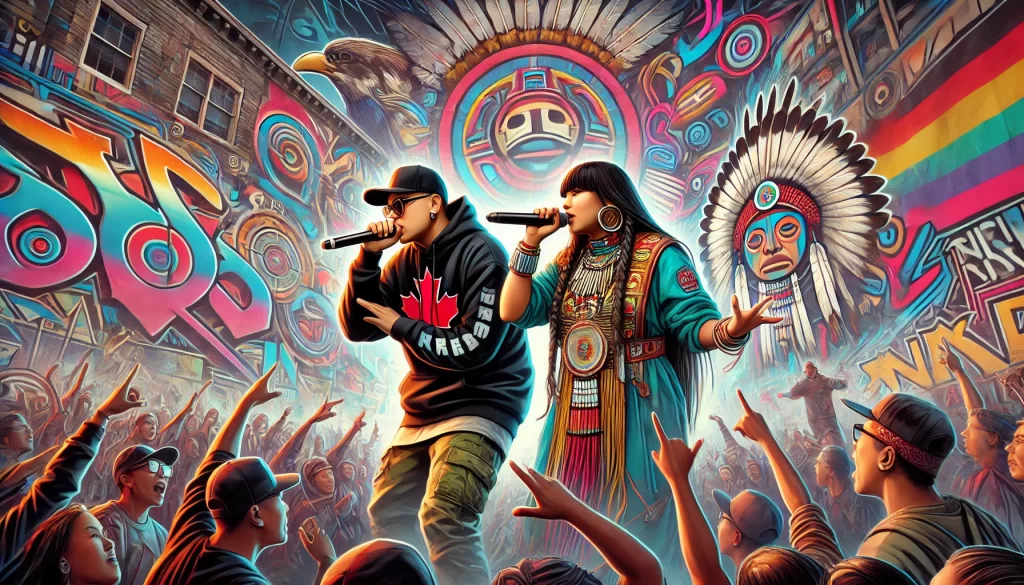
– Snotty Nose Rez Kids (Haisla Nation): This duo blends trap beats with lyrics about Indigenous pride and resistance.
– JB the First Lady (Nuxalk/Onondaga Nations): She mixes hip hop with traditional vocals and powerful messages.
“Hip hop lets us speak our truth,” says MC Rhyme Eagle. “We can talk about our experiences, our struggles, and our victories in a way that really connects with people.”
Rock and Alternative
Indigenous rock artists are creating powerful music that often addresses social and political issues.
Example artists:
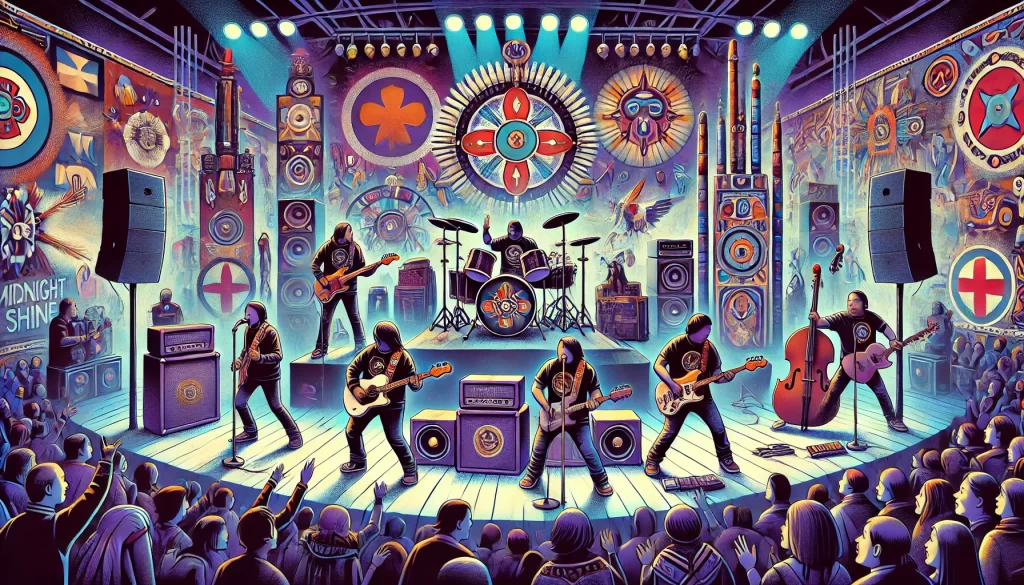
– The Jerry Cans (based in Iqaluit, Nunavut): They blend rock with traditional Inuit throat singing.
– Midnight Shine (from the James Bay region): Their rock sound incorporates Cree language and themes.
“Rock music has always been about rebellion,” explains guitarist Lisa Thunderstrum. “For us, it’s a way to challenge stereotypes and show the world who we really are.”
Electronic and Dance
Indigenous artists are also making waves in the electronic music scene, creating innovative sounds that often incorporate traditional elements.
Example artists:
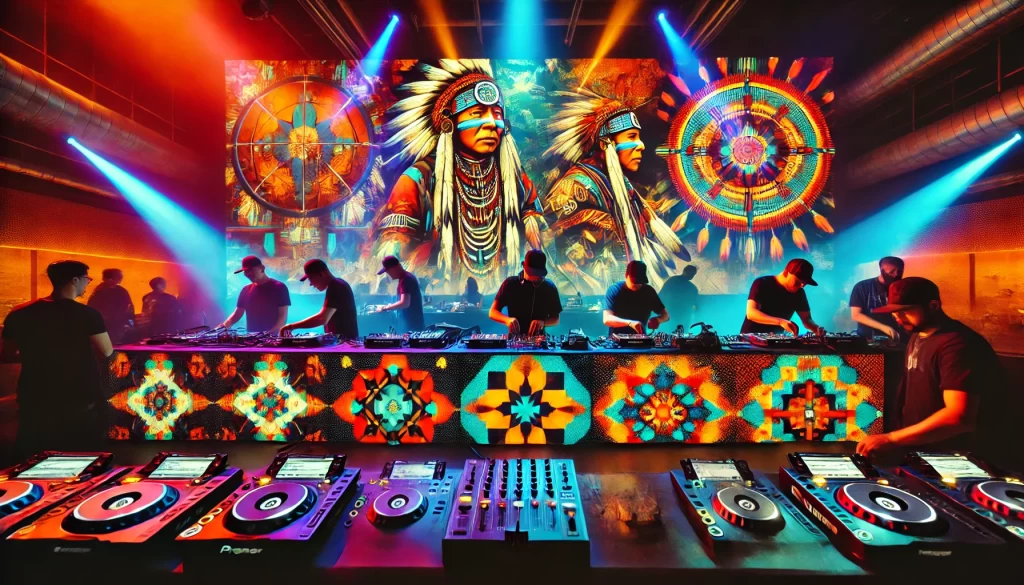
– A Tribe Called Red (now known as The Halluci Nation): They pioneered the ‘powwow-step’ genre, mixing electronic beats with powwow drums and vocals.
– Ziibiwan (Anishinaabe): Creates ambient electronic soundscapes inspired by the land.
“Electronic music gives us a whole new toolkit,” says DJ Northern Lights. “We can take a traditional song and reimagine it in a way that fills a dance floor while still honoring its roots.”
Folk and Acoustic
Many Indigenous artists continue to work in folk and acoustic styles, creating intimate music that often focuses on storytelling.
Example artists:
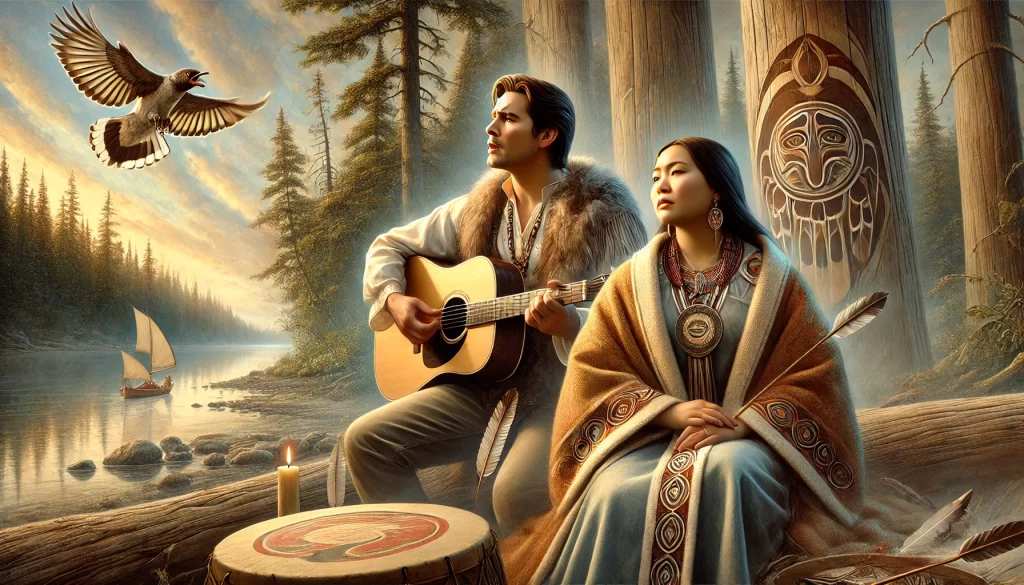
– Jeremy Dutcher (Wolastoq): A classically trained operatic tenor who reimagines traditional Wolastoq songs.
– Leela Gilday (Dene): Known for her powerful vocals and deeply personal lyrics.
“Acoustic music lets us strip everything back to the essence of the song,” shares Leela Gilday. “It’s a beautiful way to connect directly with listeners and share our stories.”
Pop and R&B
Indigenous artists are also making their mark in mainstream pop and R&B, creating catchy tunes with meaningful messages.
Example artists:
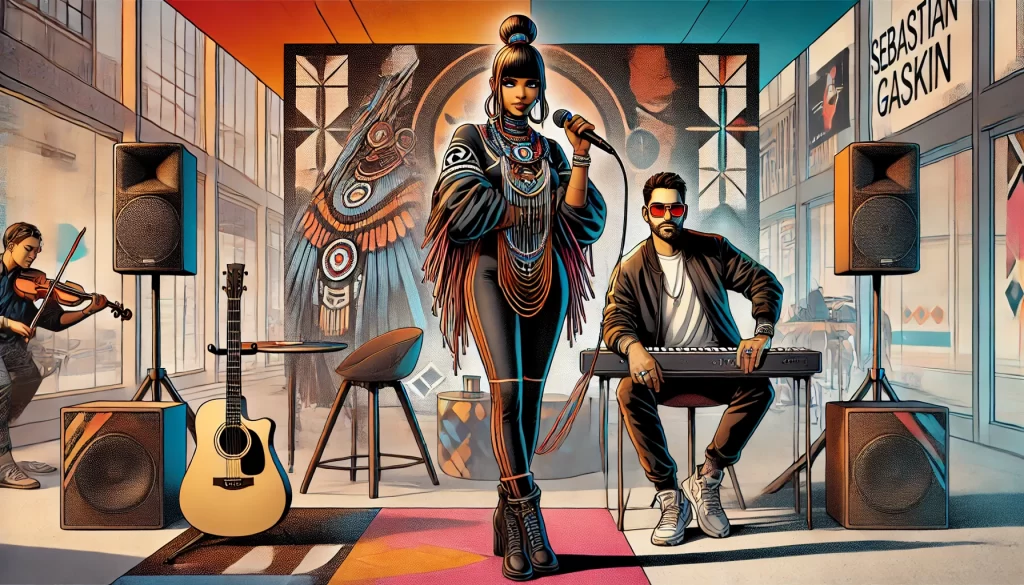
– Iskwē (Cree/Métis/Irish): Her music blends pop, electronic, and trip-hop influences.
– Sebastian Gaskin (Tataskweyak Cree Nation): Known for his smooth R&B sounds.
“Pop music has the power to reach so many people,” says rising star Melody Sunriver. “We’re using that platform to show that Indigenous culture is alive, evolving, and part of the contemporary world.”
Blending Traditions with Modern Sounds
One of the most exciting things about contemporary Indigenous music is how artists mix traditional elements with modern sounds. Here are some ways they do this:
- Using traditional instruments in new ways: Like adding powwow drums to electronic beats.
- Singing in Indigenous languages: Many artists include lyrics in their ancestral languages alongside English or French.
- Sampling traditional songs: Taking parts of old recordings and incorporating them into new tracks.
- Reimagining traditional melodies: Adapting ancient songs to modern musical styles.
- Incorporating traditional singing styles: Like Inuit throat singing or Plains-style vocables in contemporary songs.
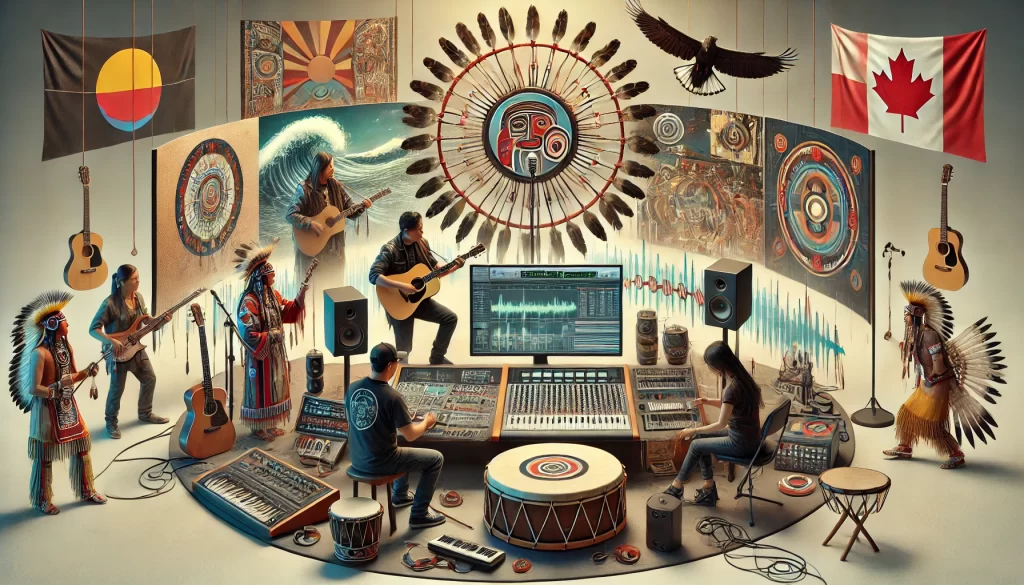
“It’s like we’re having a conversation between our ancestors and our future selves,” explains producer Tom Mixmaster. “We’re showing that our traditions aren’t stuck in the past – they’re living, breathing, and evolving.”
Themes and Messages: More Than Just Music
Contemporary Indigenous music isn’t just about creating catchy tunes (although it definitely does that!). Many artists use their music as a platform to address important themes and issues:
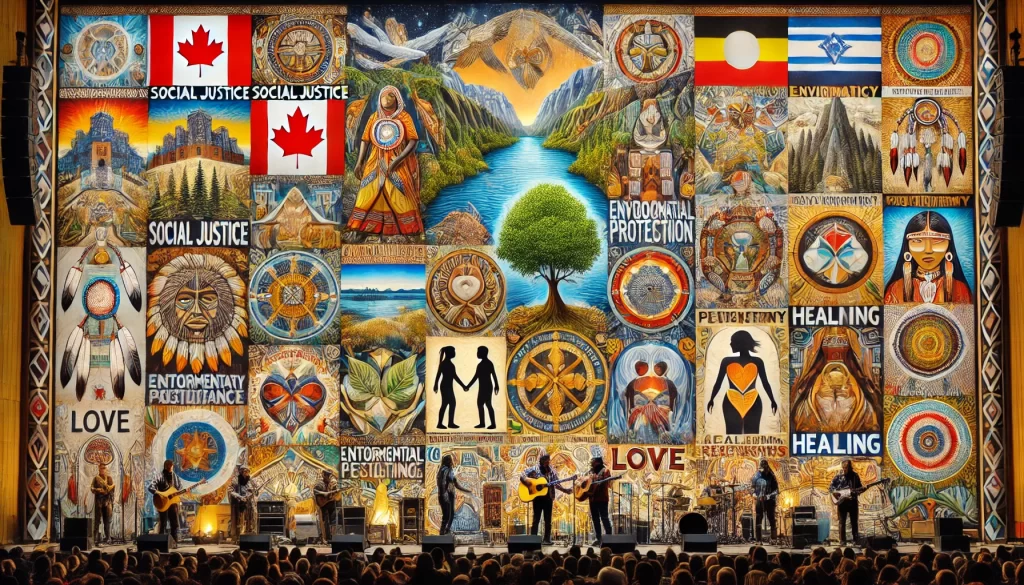
- Cultural pride and identity: Celebrating Indigenous heritage and encouraging young people to connect with their roots.
- Social justice: Addressing issues like discrimination, poverty, and the legacy of residential schools.
- Environmental protection: Many songs highlight the importance of caring for the land.
- Healing and resilience: Creating music that promotes personal and community healing from historical traumas.
- Love and relationships: Just like all music, Indigenous artists also sing about universal themes of love and human connections.
“Our music is a way of asserting our presence and our perspective,” explains music journalist Lisa Soundwriter. “It’s entertainment, but it’s also education, activism, and healing all rolled into one.”
Breaking Barriers and Gaining Recognition
Indigenous artists have faced many challenges in the music industry, including lack of representation and stereotyping. But they’re breaking through these barriers and gaining well-deserved recognition:
– Award Success: Indigenous artists are winning major music awards like the Junos, the Polaris Prize, and even Grammys.
– Festival Headliners: Many Indigenous artists are now headlining major music festivals.
– International Tours: Artists are gaining fans around the world, sharing Indigenous cultures globally.
– Collaboration with Mainstream Artists: Indigenous musicians are working with big-name artists, bringing their sounds to new audiences.
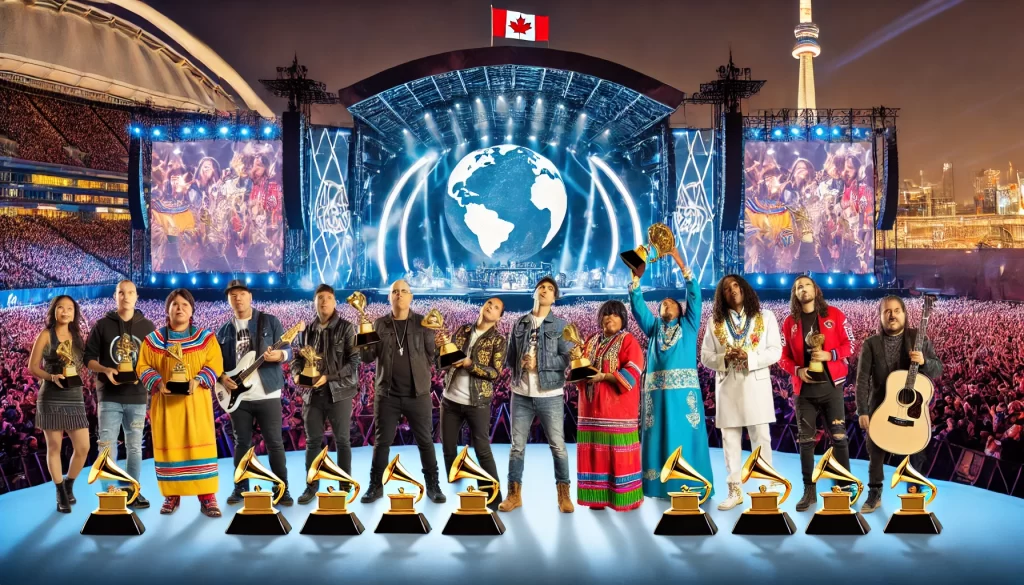
“It’s been a long journey, but we’re finally starting to get the recognition we deserve,” says veteran musician Robert Eaglerock. “It’s not just about us as artists – it’s about showing the world the beauty and power of Indigenous cultures.”
The Impact of Technology on Indigenous Music
Technology has played a big role in the growth of contemporary Indigenous music:
- Online Platforms: Streaming services and social media have helped Indigenous artists reach global audiences.
- Home Recording: Affordable technology has made it easier for artists in remote communities to record and share their music.
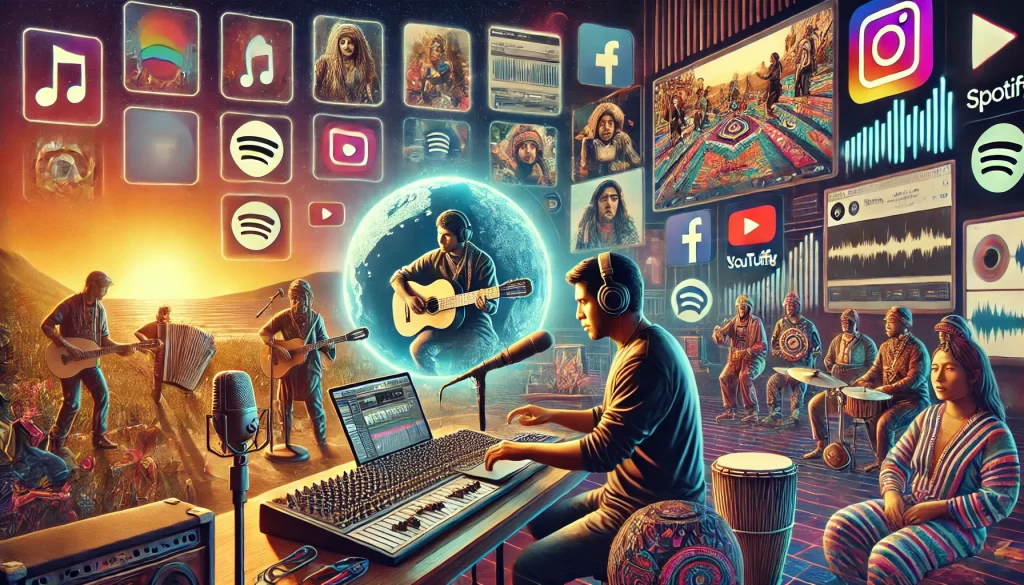
3. Virtual Collaborations: Artists can now work together even when they’re far apart.
4. Music Videos: Platforms like YouTube have given Indigenous artists new ways to visually represent their cultures and stories.
“Technology has been a game-changer for us,” says indie artist Sarah Wirelessinger. “We can now share our music with the world without having to leave our communities or compromise our values.”
Supporting Indigenous Music: How You Can Get Involved
Here at WOCA Group, we’re passionate about supporting Indigenous artists. Here are some ways you can join us in celebrating this amazing music:
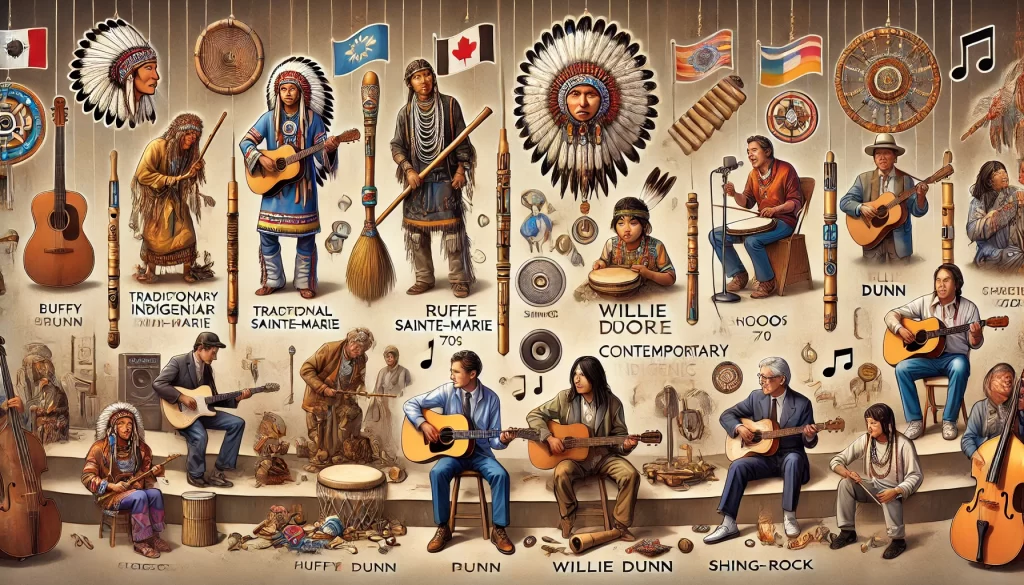
- Listen and Share: Stream Indigenous artists on music platforms and share their work on social media.
- Attend Concerts and Festivals: Experience the energy of live Indigenous music. WOCA Group often organizes community events featuring Indigenous artists – keep an eye on our calendar!
- Buy Direct: Purchase music and merchandise directly from artists when possible.
- Learn and Respect: Take time to understand the cultural context of the music you’re enjoying.
- Advocate: Support initiatives that promote Indigenous music in Canada. WOCA Group is always looking for volunteers to help with our cultural events!
“When you support Indigenous music, you’re not just enjoying great sounds,” says WOCA Group’s cultural liaison, Tom Communityspirit. “You’re helping to keep our cultures strong and vibrant for future generations.”
The Future of Indigenous Music: What’s Next?
The world of contemporary Indigenous music is always evolving. Here are some exciting trends to watch for:
- More Language Revitalization: Expect to hear more songs in Indigenous languages as artists use music to keep their languages alive.
- Cross-Cultural Collaborations: Indigenous artists are increasingly working with musicians from other Indigenous cultures around the world.
- Mainstream Breakthrough: We’re likely to see more Indigenous artists topping the charts and becoming household names.
- New Genres and Fusions: Artists will continue to push boundaries and create entirely new sounds.
- Increased Representation: Look for more Indigenous artists, producers, and executives in all areas of the music industry.
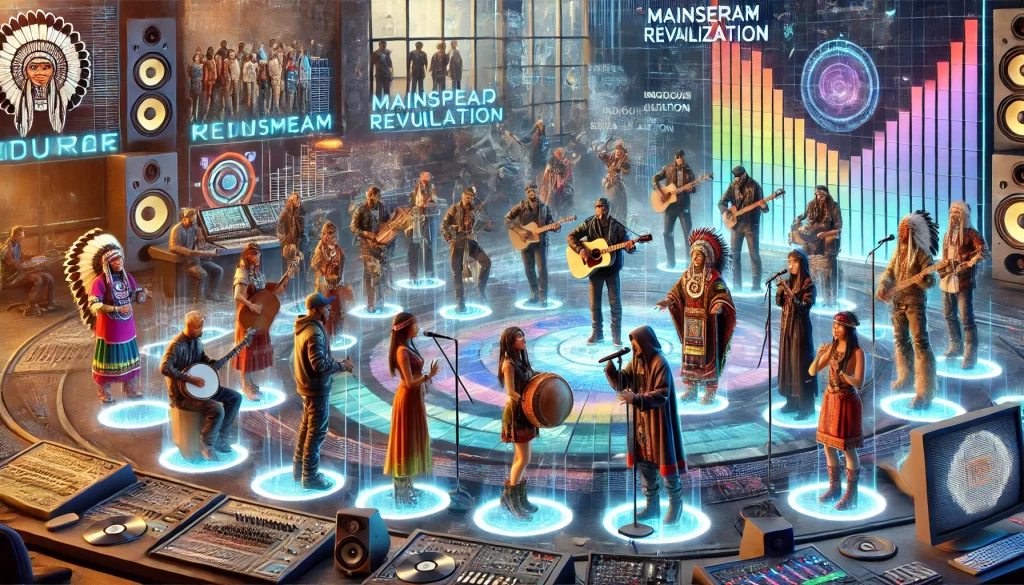
“The future of Indigenous music is as vast and varied as our cultures,” says music professor Rachel Futuresound. “I can’t wait to hear what the next generation of artists will create.”
Wrapping Up: The Beat Goes On
We’ve been on quite a journey through the world of contemporary Indigenous music in Canada. Let’s recap what we’ve learned:
- Contemporary Indigenous music blends traditional elements with modern genres.
- Indigenous artists are making incredible music in every style, from hip hop to classical.
- This music often carries important messages about identity, social justice, and cultural pride.
- Despite challenges, Indigenous artists are gaining recognition and making a big impact.
- Technology has helped Indigenous music reach global audiences.
- There are many ways to support and enjoy Indigenous music, including through WOCA Group events!
Contemporary Indigenous music in Canada is like a mighty river. It’s fed by the streams of ancient traditions, it’s powerful and ever-changing, and it’s carving new paths into the future. It shows us that Indigenous cultures are not relics of the past, but living, thriving, and evolving. The next time you hear an Indigenous artist on the radio, see one performing at a festival, or join us at a WOCA Group event, remember that you’re not just listening to a song – you’re experiencing the continuation of one of the world’s oldest and most resilient musical traditions, reimagined for today.
Now it’s your turn! What’s your favorite style of contemporary Indigenous music? Have you discovered any artists through this article that you want to check out? Share your thoughts and recommendations in the comments below. Let’s keep the rhythm going and celebrate the incredible world of contemporary Indigenous music in Canada together! And don’t forget to stay tuned to WOCA Group for more exciting cultural explorations and community events featuring amazing Indigenous artists. Together, we can amplify these powerful voices and amazing sounds!
